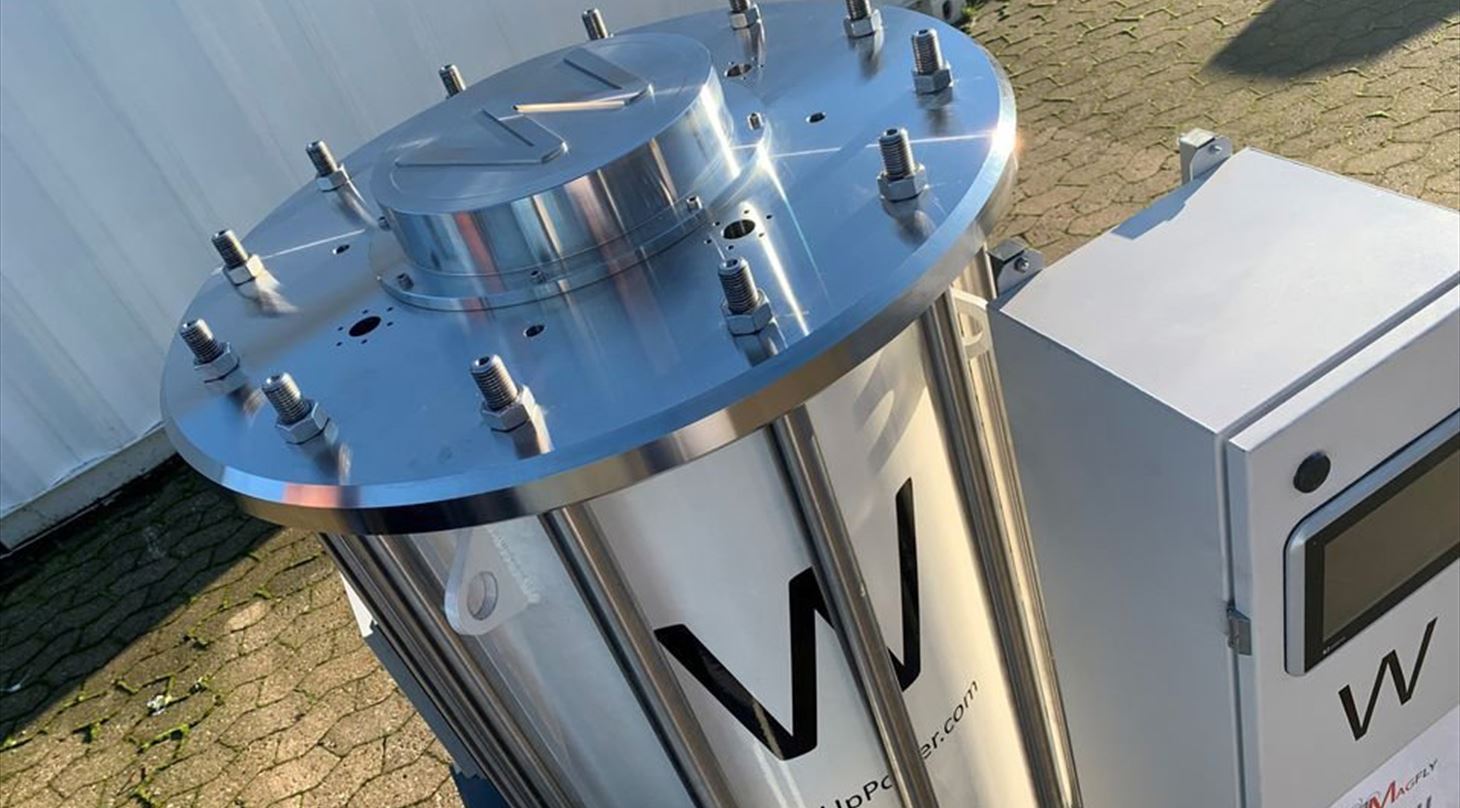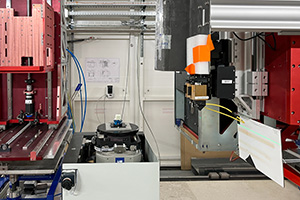
Testing of new material paves the way for the future of composite flywheels
With the help of specialists from the Danish Technological Institute, WattsUp Power has used synchrotron X-ray measurements to investigate how a new hybrid material for flywheels is affected during operation. This took place in a MADE Demonstration project.
What can it withstand?
 Lack of in-depth knowledge about materials has been a challenge for the startup WattsUp Power, who develops and produces energy storage systems for e.g. electric ferries and fast charging of electric cars.
Lack of in-depth knowledge about materials has been a challenge for the startup WattsUp Power, who develops and produces energy storage systems for e.g. electric ferries and fast charging of electric cars.
They did not know the exact strength of the materials they use to produce energy storage and flywheels, and that was a problem. Flywheels are a mechanical device that can store rotational energy, meaning that the process is based on kinetic energy.
In collaboration with the Danish Technological Institute (DTI), the company received assistance in analyzing some samples from their factory. Through synchrotron X-ray imaging, a technology primarily used for imaging at the nanoscale and material characterization, they created a 3D visualization of the material and examined its strengths and critical factors.
You can learn more about this in the video below.
Deeper insight into the material
The intense technology made it possible to look deeper into the material with a higher resolution than that used, for example, in X-rays at hospitals.
- The MADE project [with the DTI, ed.] allowed us to try out some technologies that we might not have been able to afford if we had to invest on our own, says Martin Speiermann, director and founder of WattsUp Power.
By examining both the inside, outside, and center of the material, the company gained insight into the material's structure, density, and porosity. That way, WattsUp Power identified possible defects and critical factors for the flywheel's performance.
Based on the new results in the analyses, we can see where we are moving in terms of the product's lifespan and the material's strength. The MADE project provides an opportunity to test some technologies that we might not be able to afford if we had to invest on our own
- Martin Speiermann, WattsUp Power
About MADE Demonstration project
With a MADE Demonstration project, a small or medium-sized company can receive up to 100,000 DKK in support to solve a specific challenge in the company or test new technology in production.
By being connected with the Danish Technological Institute or another Danish RTO, they gain access to the technologies, knowledge, and skills necessary to address the specific challenge in the company.
This can be within materials or production. There are ongoing application deadlines for demonstration projects.
MADE Demonstration projects are made possible with support from the Danish Business Promotion Board.